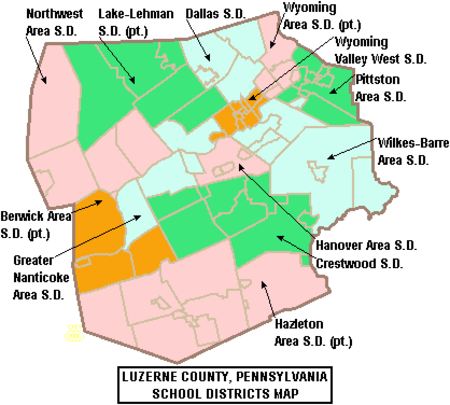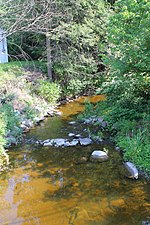Wilkes-Barre Area School District

Wilkes–Barre Area School District is an urban public school district located in Luzerne County, Pennsylvania, United States. The district encompasses approximately 123 square miles. The district includes the city of Wilkes-Barre as well as smaller surrounding municipalities. It serves: Bear Creek Township, Borough of Bear Creek Village, Borough of Laflin, Buck Township, City of Wilkes-Barre, Laurel Run Borough, Plains Township and Wilkes-Barre Township. According to 2000 federal census data, the district serves a resident population of 62,749. In 2009, the residents' per capita income was $16,751, while the median family income was $40,336.As of 2020–2021, total student enrollment in the district was 7.089, according to National Center for Education Statistics data. The district operates five elementary schools, one middle school, one junior high school and one high school, Wilkes-Barre Area High School.
Excerpt from the Wikipedia article Wilkes-Barre Area School District (License: CC BY-SA 3.0, Authors, Images).Wilkes-Barre Area School District
Beekman Street, Wilkes-Barre
Geographical coordinates (GPS) Address Nearby Places Show on map
Geographical coordinates (GPS)
| Latitude | Longitude |
|---|---|
| N 41.239 ° | E -75.909 ° |
Address
Dr. David W. Kistler Elementary School
Beekman Street
18702 Wilkes-Barre
Pennsylvania, United States
Open on Google Maps





